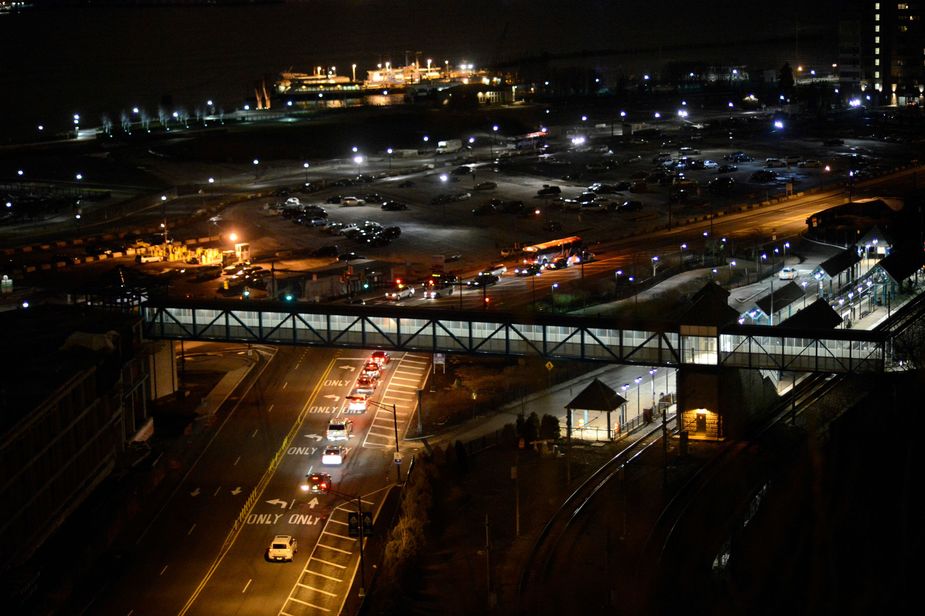I agree that today’s smartphones have great cameras.. I use my iphone camera all the time?
But no way is “damn close” the right wording. There’s light years between the quality a smartphone and a DSLR. Yes, in good light the quality is astounding. For what it is …
I must admit sometimes I take my camera bag and half my lenses, and the W&B with that and my flight bag is probably that of a medium sized human. For daytime shots, to be honest I could probably get just as good shots with my iPhone 5 in the cockpit. In fact it probably has more intelligence than my Canon and might do something with the haze. The only thing is the wobbly prop effect.
I think we really must distinguish “making pictures” from “photography” here. For making pictures many of today’s smartphones are really good. The iPhone 5 has an exceptional camera, very good even in lower light situations (to a point!), and sometimes it’s even better than my € 500 Nikon COMPACT cameras (P7100, AW110).
Now when it’s about real photography even the differences between the various classes of DSLRs (consumer, pro-sumer, professional) are so big that comparing smartphones with DSLRs makes little sense.
9 years ago I bought Nikon’s (then) top camera the D2X and a couple of professional lenses for my job. Cost me € 15.000 (and that’s without all the accessories I bought later, the new computers, hard drives, software, adapters, cables, extra batteries, new filters, tripods…. etc etc etc … like in airplanes that’s an ENDLESS list. Everytine you have a new job you need something new. I remember buying a €1500 lens just to do a story about the A380 …. (In retrospect i would not do that again, but mainly because my office produced losses with that kind of job).
9 years later you compare this camera (D2X, €4500 in 2005) with the latest Nikon professional camera, the D4 … The difference is about as big as between a Nikon compact camera and the D2X in some situations! I’ll show you a D4 image done with 1/8000s in low light conditions later, done with ISO 6400 … and I have done a coule in tests with ISO 12.500 that look VERY good. With ISO 6400 there’s very, very little noise, people who are NOT photographers would actually see no noise at all. Under these conditions a D2X produces files you can delete right away. Of course there’s not that much difference in daylight, but it is clearly visible. Let’s not talk about the HDMI uncompressed videooutput (in TV HD standard, used for TV news!) or the the speed: 100 NEF files in a row are now problem… continuous mode! The D2X stopped after 10 because no card could write the files that fast. And there’s many other improvements.
And you bet, in 10 years the D4 will be € 200 on ebay. This is a different business than airplanes :-)
This is one of the examples i wanted to you show you all. This is what’s possible today:
ISO 12.800, 1/320s, f8, Nikon AF-S 85 mm lens

That picture is doable with any current generation DLSR, that uses the c. 2010 Sony sensor. That sensor first appeared (I think) in my Pentax K5 whose ISO 57k limit amazed everybody and which produced essentially clean images at ISO values up to 10-15k. Everybody else making “€1000 DSLRs” had that sensor very quickly. It transformed low light photography, enabled a finally usable “TAV” feature (where you set the speed and set the aperture, and the camera works out the ISO) and wiped the floor with all the previous DSLR generations. Basically the K5’s low light perf was similar to a £20k Hasselblad of the era.
You just need a focusing system which works well enough / fast enough at low levels and not everybody had that (Pentax had problems too) 
The K3 is a bit better but everybody in the business has the same sensor now.
Phones can’t do that, with their current sensors, but the 808 does pretty well by taking a 40MP image and then running an average of each group of adjacent pixels (about 10 I think) to produce a 12MP image. In general, assuming the noise is random, averaging like that yields a noise reduction equal to the square root of the number of samples averaged.
No, it’s a sensor developed by Nikon (it does not have the Sony sensor) , and also, I do not think that € 1000 DSLRs could do it like that. (Other than that I could show you some pictures made with ISO 128.000 (!) that are still useable.
As I said – image procession is just as important as the sensor. And only Nikon’s Canon’s top models (and very few others) can do it like this.
The above image was downsized (by me) from 16 mp to 2000 px width
Comparing the Nokia 808 with this makes zero sense. It’s more valid to compare a TB20 with an F-15
What camera was that pic taken with?
I was not comparing anything with an 808.
Ah, sorry, my mistake!
It was taken with a D4 Nikon
Well, a D4 is about 4k so what is the relevance of that? It’s like saying whether a SEP will ever be as fast as an F15.
Maybe I should have put a price limit in my original post (say 1k) otherwise it is a hostage to fortune with somebody turning up with one of the models at the bottom of this list. I think we had this problem before…
Unfortunately it’s € 5.500 .. but I might get a demo for 4.500. My tax advisor thinks it’s okay ;-))